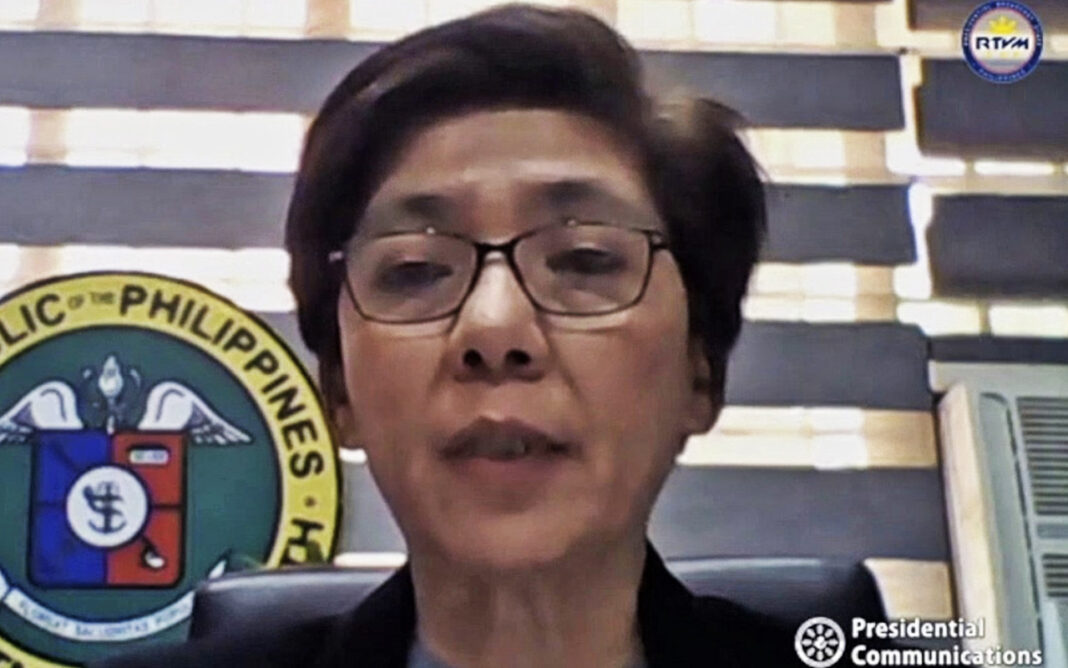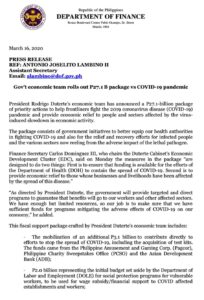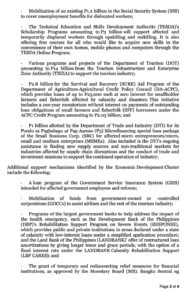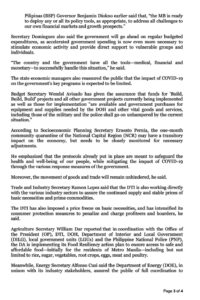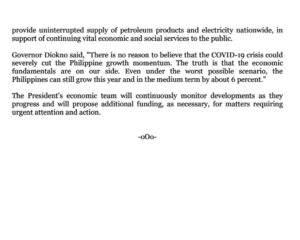Despite the steady increase of COVID-19 positive cases in the country, the Department of Health (DOH) maintained there is no need for mass testing now. This straight response has prompted netizens, locked in the internet and social media while on lockdown, to call for mass testing now.
Online petition for mass testing now
An online petition signed by “the Filipino people” calls on the government to conduct mass testing now. The petition started six days ago. The petition currently has more than 83,000 signatures.
A Twitter rally to make #MassTestingNowPh trend on Twitter at 8pm on March 22 was also shared by netizens.
#MassTestingNowPH has been a trending hashtag before and after the DOH pronouncement and the Inter-Agency Task Force on Emerging Infectious Diseases (IATF) head Karlo Nograles said in a press con that lockdown is the solution.
We don’t need excuses on why we can’t do #MassTestingNowPH. We need SOLUTIONS!
China gave 100k kits. FDA approved the UP kits already. Hell, even Marikina bought their own lab. The national government can’t buy?
KUNG GUSTO MAY PARAAN, KUNG AYAW, MAY DAHILAN.
— Ethel (@econcepcion) March 21, 2020
Sorry that Migs Zubiri tested positive for COVID-19 but that he knows this is once again a result of privilege.
He said he's asymptomatic and yet he got tested. Meanwhile, there are poor people who have symptoms that are yet to get tested.
To that we say #MassTestingNowPH!
— Juan Miguel Severo ?️? (@TheRainBro) March 17, 2020
It's not funny when people are getting paranoid over simple chills, when we have politicians who are asymptomatic, and getting tested to know their status.#MassTestingNowPH
This shouldn't be a privilege. In a pandemic, it shouldn't be a privilege.
— Not-so-okay Boomer (@notsookay21) March 17, 2020
DOH says mass testing not needed now
On Friday, March 20, DOH Undersecretary Maria Rosario Vergeire was asked in a press conference if the country is capable of “aggressive testing” and if there is a need to conduct tests door-to-door, similar to what countries like South Korea, Singapore and Cuba are doing.
Sa ngayon po, hindi pa naman natin nakikitang kailangan nating gawin itong mass testing na ito,” Vergeire said.
[For now, we don’t see the need to do mass testing.]
“In other countries, though it has been done like in South Korea, they did mass testing, pero ito po ay mayroon silang [but they have]… well-capable ang kanilang health systems at capacity for that,” explained Vergeire.
The call further gained ground after politicians who are not exhibiting mild or severe symptoms were tested.
DOH has only conducted 1,399 tests in more than 50 days. It has turned up 26% or 370 positive cases.
“This number could only go higher and transmission would be known to have spread in areas that have not reported positive cases if only more tests have been conducted and then isolation or quarantine and treatment could proceed scientifically. The number of those affected only goes higher amid a lockdown that does not or have not even looked into mass testing as a solution to ‘detect, test, treat, isolate and trace contacts’ as advised by the WHO. The people in the same restricted area may all just end up catching the disease,” said Habagat Farrales of Tulong Kabataan UP Manila.
Tulong Kabataan UP Manila has raised P433,000 in donations for the government’s national university hospital, Philippine General Hospital (PGH) since it started on March 14.
What are our priorities
“If you listen to DOH, some well-meaning doctors saying they don’t want to overwhelm the health system if mass testing is done, these only go to show that it might not really because we don’t need it but that we don’t have the capacity for it. We don’t have the laboratories, we rely on foreign and private donations for testing kits, we don’t have enough health workers, we don’t have enough funding and it is confusing why in the assured additional funds to-date, more than half of the government’s P 27.1 billion COVID-19 package went to tourism,” said Farrales.
The Department of Finance (DOF) on March 16 announced a P27.1 billion ‘war chest’ or spending plan to “help frontliners fight the 2019 coronavirus disease (COVID-19) pandemic and provide economic relief to people and sectors affected by the virus-induced slowdown in economic activity.”
DOF Secretary Dominguez said the bulk of the government’s package is allotted for tourism “because as of now, the tourism sector is the most affected.” National Economic Development Authority (NEDA) estimated a drop of 1.4 million tourist arrivals and P93 to P187 billion earnings lost in the tourism industry.
Of the P27.1 billion:
- 1 billion has been set aside to buy more coronavirus test kits. The funds came from Philippine Amusement and Gaming Corporation, Philippine Charity Sweepstakes Office, and a grant from the Asian Development Bank.
- P 14 billion was set aside to boost the tourism industry, the funds will be sourced from the Tourism Infrastructure and Enterprise Zone Authority (TIEZA)
- P3 billion for scholarship programs of the Technical Education and Skills Development Authority for displaced workers
- P 2.8 billion aid for farmers
- P 2 billion by the Department of Labor and Employment will be allotted to displaced workers
- P 1.2 billion was also set for Social Security System unemployment benefits
- P 1 billion from the Department of Trade and Industry to finance small and medium enterprises affected by COVID-19.
Kabataan Partylist NCR said the government’s ‘war chest’ shows how ‘skewed the government’s priorities are.’
The additional budget was supposed to help frontliners but none of the budget would go to the immediate needs of frontliners such as face masks, personal protective equipment, meals and lodging. Only 11% will go to testing kits, while the rest will supposedly be beneficial to some sectors only when the lockdown is over by April 12.
The group also said the government should ‘stop going around in circles.’
“The call ‘solusyong medikal, hindi militar’ gained popularity because a lot of people are aware that the government implemented a lockdown when there were only 52 confirmed cases without looking into solutions such as mass testing to isolate the disease. They put 12-15 million people’s lives in NCR on hold for 52 cases and now there are 370 after 10 days; cases rise and there is still no mass testing. They did not look into the hunger and suffering of daily-wage earners, informal settlers, homeless—the poor when they issued the lockdown,” said Kabataan Partylist NCR Vice Chair Lorevie Caalaman.
Apart from NCR, other regions now included in the ‘total lockdown’ since March 17 included Ilocos Region, Cordillera, Central Luzon, Southern Tagalog and Bicol. The population of Luzon is 57.47 million in 2015, and comprises around 57% of the whole country’s population of 102 million then. The country currently has an estimated 109 million population.
“COVID-19 could only spread further because government does not want to be exposed how unprepared and ill-equipped it is by avoiding mass testing. Contrary to its slogan #LagingHanda [always prepared], it is actually #HindiHanda [not prepared] and after seven weeks are to slow to act except impose a militarist setup. But the government should set aside its shame and do what is best for the people. They should assure the people they would do mass testing. If it takes weeks to set up the laboratories, then they should start now,” said Caalaman.
WHO says test, test, test
The Philippine government’s attitude towards mass testing does not seem to complement the World Health Organization’s key message to “test, test, test.”
“You cannot fight a fire blindfolded. And we cannot stop this pandemic if we don’t know who is infected. We have a simple message for all countries: test, test, test. Test every suspected case. If they test positive, isolate them and find out who they have been in close contact with up to 2 days before they developed symptoms, and test those people too,” said WHO Director General Dr. Tedros Adhanom Ghebreyesus.
On March 18, WHO South-East Asia Regional Director Dr. Poonam Khetrapal Singh said the region should “urgently scale-up aggressive measures” to stem the spread of the COVID-19.
“Of critical importance are continued efforts to detect, test, treat, isolate and trace contacts,” Singh said.
South Korea did away with a lockdown and instead offered free tests to anyone who had been in contact with a confirmed COVID-19 case. Cuba did not impose a lockdown but closed its borders, tested 1,000,000 citizens in four days mobilizing 28,000 medical students before sending out 52 doctors to Italy.


























